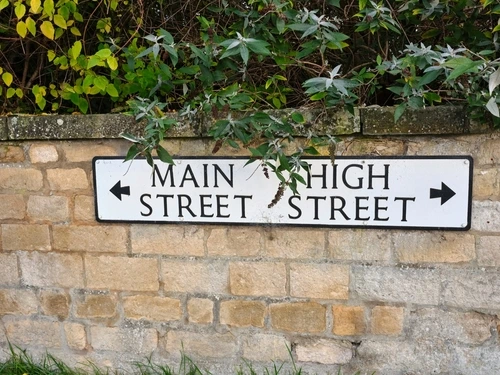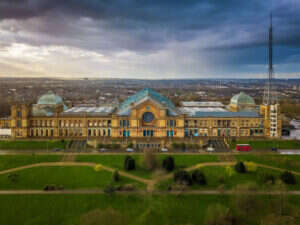
A comprehensive list of every single road name in the UK can provide valuable insights and information across various domains. Here are some potential things that can be learned from such a list: Geographical distribution, historical context, cultural influences, urban development and infrastructure planning, transportation and traffic management, societal and demographic information, local identities, land use and commercial activity, language and linguistic analysis, tourism and travel planning, changes in naming trends.

Here is what we discovered…
1) There are about 790,000 roads with names in England, Scotland and Wales.
The Ordnance Survey Open Names database lists 788,340 roads with a name, from Aachen Way in Halifax to Zurich Gardens in Bramhall.
2) The most common suffix in a road name is, unsurprisingly, ‘Road’
But only a fifth of roads (about 160,000) are called “Something Road”: 15 per cent are Closes, 10 per cent are Streets, 8 per cent are Lanes and 6 per cent are Avenues.
3) The most popular road name in the UK is probably what you would have guessed it would be
Drumroll please for….
“High Street”
…of which there are 2,453. Followed by Station Road (2,023), Church Lane (1,868), Church Street (1,521) and Mill Lane (1,318). This finally, conclusively proves that trains are better than Jesus AND mills.
4) The road with the longest name is in the New Forest
Congratulations, “Bolderwood Arboretum Ornamental Drive”: you did it!
(Not counting ‘names’ that include bracketed or other alternative names. Or ‘Woodpecker Crescent Woodpecker Crescent’ in Burgess Hill, which is presumably an error rather than some quirky bit of Sussex-based self-referentialism.)
5) The road with the shortest name is in Somerset
Rye, a road in the village of Puriton in Somerset, unexcitingly named after the green thing it runs past.
It does, debatably, have some competition: the MediaCity complex in Salford is so trendy that it has colours instead of road names, which means there’s a road listed under the name “Red” in the Ordnance Survey database.
There’s also an “Alt” in Widnes but that’s an abbreviation for “Alternate” which is a very normal thing to name a road. Good job, Widnes.
6) There are places with plenty of roads, but very few Roads
As noted in CityMonitor, the City of London may be the most famous example of a place with “no roads” (no roads named Somethingorother Road; although sadly this is no longer technically true, curse your eyes, Goswell Road).
One posited explanation is that incorporating the word Road into a road name is a modern enough concept that the layout of the City predates it.
7) The second most roadless place in the UK sits at the other end of urban history
In Milton Keynes, only 4 per cent of named roads are Roads. When the town was laid out in the 1960s it was decided the horizontal roads of its innovative grid system would be Ways, and the vertical roads Streets: but the majority of the roads are actually the smaller suburban Closes, Courts, Places & Drives that lie within the box of each grid.
No, this is very interesting actually.
8) Fanny Hands Lane
Okay, fine.
9) If you think Milton Keynes has an overly methodical road naming scheme, check out this estate near Southampton
Roads that run one way are A Avenue, B Avenue, C Avenue, D Avenue, E A… you get the idea. Roads that run the other are 1st Street, 2nd Street and so on. I’m coming up, so you better get this party started!
10) Scotland is the home of the Place
For example, “Place” is the most common suffix in East Kilbride, appearing in 17 per cent of road names. It’s also in more than 10 per cent of the road names of Edinburgh, Glasgow, Aberdeen and Dundee.
11) There’s a North/South divide between Streets and Roads
Obligatory map:

There are more Streets than Roads in much of the North: Oldham and Burnley are more than 45 per cent Street. Meanwhile on the south coast, Bournemouth only has one. And it’s not even a very good one.
12) Blackpool is 30% Avenues
An avenue is usually a road with lots of trees. This randomly selected avenue in Blackpool has hardly any:
What’s up, Blackpool? What did you do with all the trees?
13) Gateshead is 18% Gardens
Maybe that’s what the Gates are for!!!!! HA HA.
14) There’s no road called ‘The Road’
But there are 595 “The Street”s and 578 “The Avenue”s. What a creative island we are.
15) There’s a road called “Burnt Dick Hill”
OK then.
[Read more: How did London’s Tube lines get their names?]






